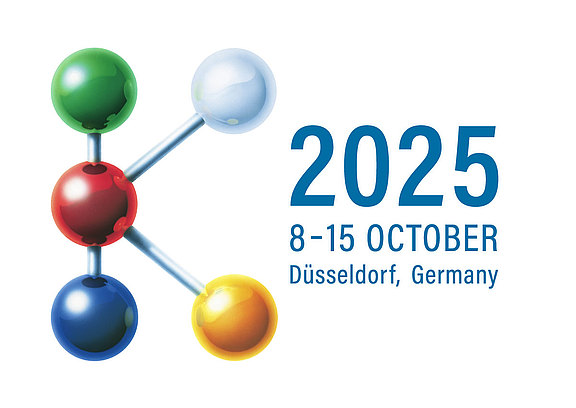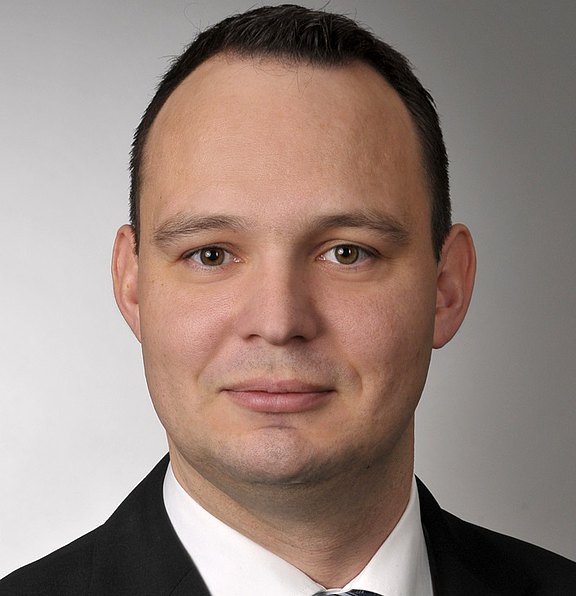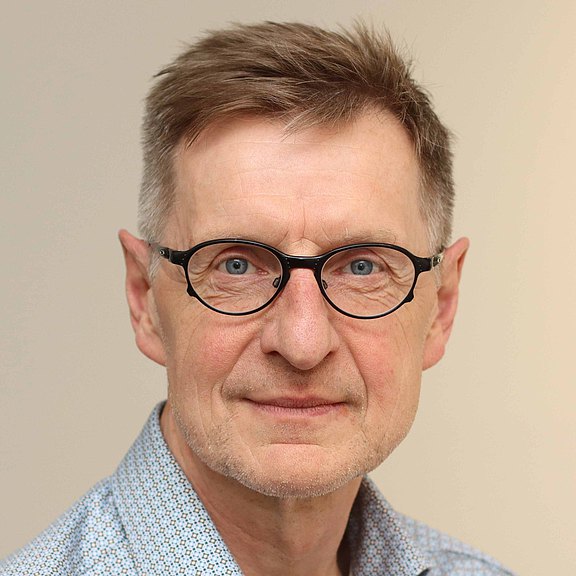The TITK Group at the K 2025 trade fair in Düsseldorf
Organic adhesives, metal printing filaments, lightweight construction tapes: TITK Group showcases the full range of polymers at KHall 7, Booth B24 on Level 0 – this has been the traditional location of the TITK Group from Rudolstadt for many years when it comes to the world's most important industry gathering for the plastics industry in Düsseldorf. This year, the Thuringian Institute for Textile and Plastics Research e.V. and its two subsidiaries, OMPG and Smartpolymer, will once again be presenting innovative products and services related to research, testing, and transfer at the K trade fair. These include the multi-award-winning Caremelt® bio-hot melt adhesive, highly filled filaments for metal 3D printing, and carbon fiber-reinforced tapes for the most demanding lightweight construction applications.
We will present the following examples of our portfolio:
TITK - Thüringisches Institut für Textil- und Kunststoff-Forschung e.V.
- Caremelt® - fully bio-based and biodegradable hotmelt adhesive.
- Lightweight components made of natural fiber composites and with bio-matrix
- functionalized plastics, e.g. with an antiviral surface
OMPG - Ostthüringische Materialprüfgesellschaft für Textil und Kunststoffe mbH
- accredited testing services on plastics
- material testing of automotive applications, medical devices and consumer goods
- microbial testing / biocompatibility testing
smartpolymer GmbH
- phase change materials (PCM) for thermal management, e.g. for effective temperature control of batteries

Our experts on site
Register now to secure your spot and receive a complimentary ticket!| Martin Geißenhöner | Henning Austmann | Daniela Altendorf | Uwe Schmidt |
|---|---|---|---|
| Focus areas | Focus areas | Focus areas | Focus areas |
| PCM polymer compounds Extrusion and compounding Modification of plastics | Polyamide Radiation crosslinking Plastic additives Contract synthesis | Elastomers (Rubber etc.) Modification and functionalisation Compounding Laboratory scale | Bio-adhesive hotmelt Caremelt® Phase-Change-Materials (PCM) for heat and cold storage Flocked applicators for cosmetic and dental sectors |
Flexible, self-regulating heating elements — efficient and safe
Overview
PTC (Positive Temperature Coefficient) heating foils increase their resistance as the temperature rises. This automatically limits the power output and protects sensitive materials, people and the heating element from overheating – without the need for additional electronics. The heating power adapts to the current heat demand: higher power at low temperatures, reduced power at high temperatures.
Advantages at a glance
- Self-regulating: no external temperature control necessary
- Safe: inherent limitation of power output, protection against overheating
- Versatile properties: flexible, thermally deformable, laminatable, sealable
- Environmentally friendly: recyclable films without printed conductors
- Easy to integrate: various thicknesses, can be embedded in plastic components
Typical areas of application
- Electric floor and wall heating
- Vehicle heating (e-mobility, rail vehicles, seat heating)
- Aquariums, water beds, medical couches/operating tables
- Sensor, mirror and container heating systems
- Shoe soles, seats and other surface-related heating applications
Basic technical data
| Property | Value |
| Specific resistance | Approx. 1–100 Ω·cm (conductivity 0.01–1 S/cm) |
| Resistance increase | Factor 2–50 at 80 °C; factor ≈300 at 100 °C |
| Target temperature range | ≈ 40 °C to 100 °C |
| Heating power | adjustable ≈ 0.1 – 1.5 kW/m² (depending on application) |
Material | Polyolefin-based film, additives, metal-free, high cycle stability |
First fully bio-based and biodegradable hot melt adhesive
Biopolymers such as polylactide (PLA), polybutylene succinate (PBS), bio-based and degradable resins, waxes and plasticisers are used.
Property profile:
| Property | Method / Standard | Caremelt | Conventional Hot-Melt Adhesive |
|---|---|---|---|
| Adhesion / Cohesion | DIN EN 1465 | 2.0 MPa – 6.0 MPa (stainless steel) | 2.0 MPa – 4.0 MPa (stainless steel) |
| Heat Resistance | S.A.F.T. | 90°C – 130°C | 90°C – 120°C |
| Viscosity | Rheometer | > 5,000 mPa·s (160°C) | from 1,000 mPa·s (160°C) |
| Melting Range | DSC | 85 – 115°C | 80 – 120°C |
| Open Time | TITK method | 15 – 150 s | 5 – 60 s |
| Processing Time | TITK method | 10 – 100 s | 1 – 20 s |
Areas of application:
Packaging and logistics, bookbinding and print finishing, furniture and wood industry, textile and non-woven fabric processing, automotive industry, DIY sector
Flexible form variants:
Granulate:
- Small extruder: 100 kg – 1,000 kg
- Large extruder: 1 t – 100 t
Sticks (with cooperation partner):
- Diameter: 7 mm, 11 mm
- Length: variable
Non-woven fabric (with cooperation partner):
- Weight per unit area: 15 g/m²–120 g/m²
- Roll width: 140–180 cm
Film (with cooperation partner):
- Surface weight: 20 – 1,000 g/m²
- Roll width: 120 – 210 cm
Contact:
Andreas Krypczyk
Research Associate
Native Polymers and Chemical Research
Tel.: +49 3672 379-270
Email: krypczyk@titk.de
Metal 3D printing
Process:
- Binder (plastic blend of at least two components, one component is water-soluble, the other is not) is compounded together with high proportions of metal or ceramic powder
- This compound is then extruded into a filament for FFF printing (fused filament fabrication) and wound onto a spool
- The filament is printed into a component.
- This is followed by solvent debinding in a water bath, during which the water-soluble main component is removed.
- The remaining plastic content (backbone) is thermally removed in an oven.
- Finally, the component is sintered and post-processed if necessary.
Project objective:
Conventionally available filaments require toxic or flammable solvents for solvent debinding.
Blends specially developed by TITK are partially water-soluble and therefore more environmentally friendly and sustainable.
Additive manufacturing of metallic components via material extrusion offers significant cost and efficiency advantages for prototypes or small series compared to cost-intensive powder bed-based processes such as laser sintering (all you need is an inexpensive printer and the right filament; debinding and sintering are provided as a service; SLS, for example, requires a large amount of equipment).
Projects:
The MexWer research group, which focuses on the production of metal components from tool steel, was completed in June 2025, with the first components successfully sintered.
A follow-up project (‘Binder development for sustainable material extrusion’) will run from May 2025, investigating further binder systems and the production of ceramic components.
Contact:
Edgar Merting
Research Associate
Plastics Research Department
Tel.: 03672/379425
Email: merting@titk.de
Sustainable material concept as a combination of component and decor
Task
The aim of the project was to develop a material concept that combines natural fibre carrier materials with (recycled) decorative materials, taking into account the single-material nature of the components for later recycling. Ideally, this material concept should be suitable for one-shot processes. The focus was on the development of non-woven decorative materials based on recycled PP or PES fibres. A key focus was on optimising the decorative surfaces of the nonwovens in terms of their friction and abrasion resistance and their processability in one-shot processes together with the natural fibre substrate in order to eliminate the need for additional laminating processes and adhesives.
Results
In addition to colouring and colour consistency, the abrasion and scrub resistance of non-woven fabrics is crucial for their use in interiors. The scrub resistance was significantly improved in the course of the project through suitable post-treatments. The non-woven fabrics thus meet the specifications of automotive manufacturers. The industrial feasibility was demonstrated by scaling up the finishing tests from discontinuous laboratory tests to a continuous small-scale technical level. The finished nonwovens were used to manufacture demo components under industrial conditions. The component manufacturing tests demonstrate the industrial transferability of the developed materials and processes.
No additional adhesive webs or other aids are required to achieve sufficiently high adhesion between the decorative layers and the natural fibre carrier material.
Application
The results achieved are primarily aimed at application in automotive interiors, but are also highly relevant across a range of industries. Fibre recyclers and nonwoven fabric manufacturers will benefit most from the results. The potential of decorative and surface nonwovens in automotive interior design has not been recognised until now. The work has shown that attractive designs are also possible with nonwovens.



